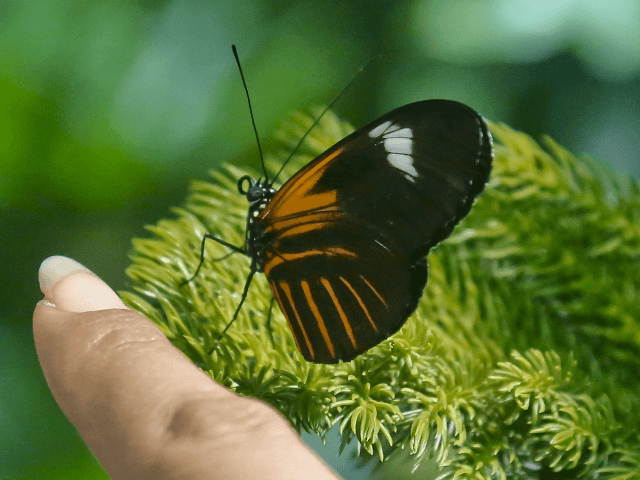Half of all insect species are on track to lose more than half their geographical range by the year 2100 thanks to global warming, a new study prophesies.
A team of five climate researchers from the University of East Anglia in Norfolk, UK, and James Cook University in Australia set out to explore how a rise of 3.2ºC in mean global temperature could affect 31,000 insect species, 8,000 bird species, 1,700 mammal species, 1,800 reptile species, 1,000 amphibian species, and 71,000 species of plants.
The team published its predictions Friday in the journal Science in a highly political article seemingly aimed at persuading readers of the benefits of the Paris Climate Accord.
Insects are not the only class of creature to be decimated in the authors’ apocalyptic climate scenario. They suggest that some 44 percent of plants would lose half their overall geographic range, with 26 percent of mammals, birds, reptiles, amphibians, and fish facing the same fate. These catastrophic losses of habitat are predicated upon a rise of 3.2ºC above pre-industrial levels.
The study spawned a series of fawning articles touting its important findings, with titles such as “The World Is Becoming Uninhabitable for Animals” and “Keeping warming to 1.5°C instead of 2°C would save most animals from climate change.”
In a rare moment of modesty, however, the authors of the study acknowledge that, in fact, scientists “have little information” about the fate of insects in a changing climate since “data are scant for insects compared with other groups of organisms.”
This confessed ignorance proved to be no deterrent to the researchers. The class of creature that scientists claim to know the least about turned out to be the ones predicted to suffer the greatest losses if global temperatures rise.
Enter the Paris Climate Accord.
If the Paris goal of keeping global temperatures from rising above 2 degrees Celsius over pre-industrial levels is met, the authors suggest, then only 16 percent of plants, and 8 percent of insects, mammals, birds, reptiles, amphibians, and fish would lose more than 50 percent of their range by 2100.
As any student of statistics is aware, predictions with such a high degree of precision are difficult in experiments involving few variables and a significant level of control. In scenarios such as the present one—with hundreds of thousands of variables and zero control—such predictions are all but worthless.
To be able to say with any degree of certitude that 8 percent of reptiles would lose more than half their habitat because of a 2ºC rise in global temperature over an 80-year period would require an enormous volume of verifiable data that these scientists simply do not possess. In the end, their estimates are based on extrapolations from climate models with little if any real scientific value.
But reading the report between the lines, one realizes that the authors’ goal is not to produce a reliable estimate of how many acres of land will be available to host mosquitos in the year 2100.
It is rather to convince people to willingly subject themselves to onerous political programs designed to phase out affordable fossil fuels in favor of “renewables,” which are in turn dependent upon taxpayer-funded government subsidies.
As a recent study showed, however, people most favorable to such government programs are actually the least likely to behave themselves in an environmentally friendly way.
The jury is still out on the future of insects. In the meantime, radically altering human behavior based on the wild predictions of climate forecasters seems, to say the least, a bit premature.
Follow Thomas D. Williams on Twitter Follow @tdwilliamsrome

COMMENTS
Please let us know if you're having issues with commenting.